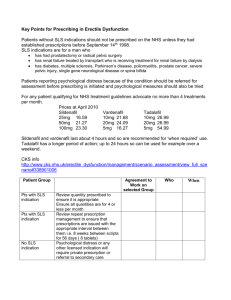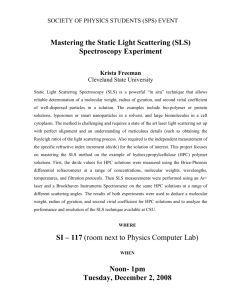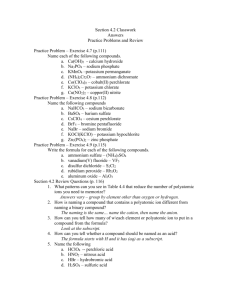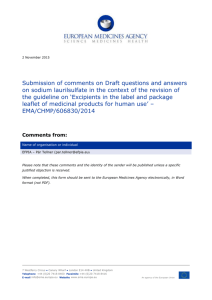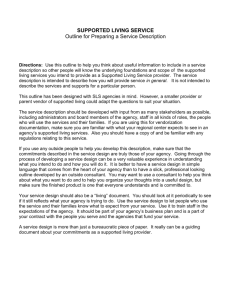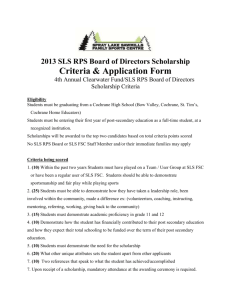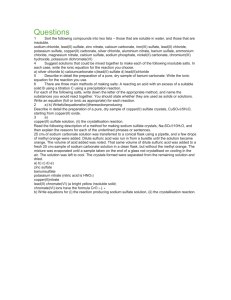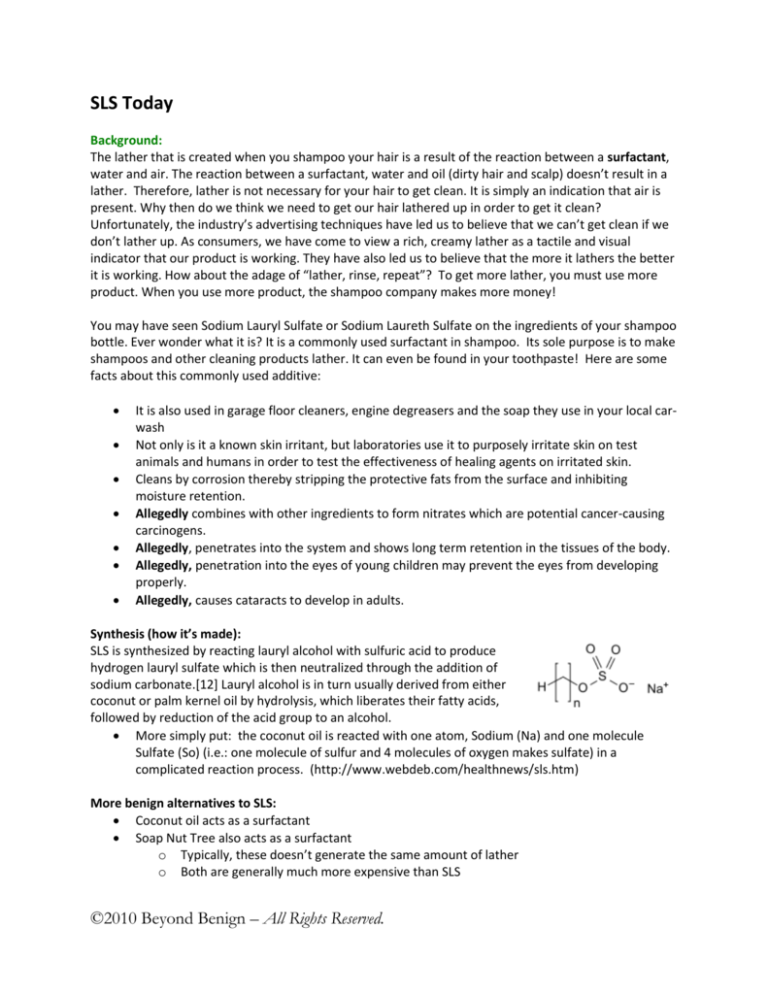
SLS Today
Background:
The lather that is created when you shampoo your hair is a result of the reaction between a surfactant,
water and air. The reaction between a surfactant, water and oil (dirty hair and scalp) doesn’t result in a
lather. Therefore, lather is not necessary for your hair to get clean. It is simply an indication that air is
present. Why then do we think we need to get our hair lathered up in order to get it clean?
Unfortunately, the industry’s advertising techniques have led us to believe that we can’t get clean if we
don’t lather up. As consumers, we have come to view a rich, creamy lather as a tactile and visual
indicator that our product is working. They have also led us to believe that the more it lathers the better
it is working. How about the adage of “lather, rinse, repeat”? To get more lather, you must use more
product. When you use more product, the shampoo company makes more money!
You may have seen Sodium Lauryl Sulfate or Sodium Laureth Sulfate on the ingredients of your shampoo
bottle. Ever wonder what it is? It is a commonly used surfactant in shampoo. Its sole purpose is to make
shampoos and other cleaning products lather. It can even be found in your toothpaste! Here are some
facts about this commonly used additive:
It is also used in garage floor cleaners, engine degreasers and the soap they use in your local carwash
Not only is it a known skin irritant, but laboratories use it to purposely irritate skin on test
animals and humans in order to test the effectiveness of healing agents on irritated skin.
Cleans by corrosion thereby stripping the protective fats from the surface and inhibiting
moisture retention.
Allegedly combines with other ingredients to form nitrates which are potential cancer-causing
carcinogens.
Allegedly, penetrates into the system and shows long term retention in the tissues of the body.
Allegedly, penetration into the eyes of young children may prevent the eyes from developing
properly.
Allegedly, causes cataracts to develop in adults.
Synthesis (how it’s made):
SLS is synthesized by reacting lauryl alcohol with sulfuric acid to produce
hydrogen lauryl sulfate which is then neutralized through the addition of
sodium carbonate.[12] Lauryl alcohol is in turn usually derived from either
coconut or palm kernel oil by hydrolysis, which liberates their fatty acids,
followed by reduction of the acid group to an alcohol.
More simply put: the coconut oil is reacted with one atom, Sodium (Na) and one molecule
Sulfate (So) (i.e.: one molecule of sulfur and 4 molecules of oxygen makes sulfate) in a
complicated reaction process. (http://www.webdeb.com/healthnews/sls.htm)
More benign alternatives to SLS:
Coconut oil acts as a surfactant
Soap Nut Tree also acts as a surfactant
o Typically, these doesn’t generate the same amount of lather
o Both are generally much more expensive than SLS
©2010 Beyond Benign – All Rights Reserved.
Ammonium Lauryl Sulfate (ALS) on the other hand is much milder than SLS. It is made of the
lauryl coconut soap ester and the sulfate; the same as in SLS. However the irritating sodium
atom is not present and instead an ammonium (not ammonia) molecule (not an atom) made up
of one nitrogen and four hydrogen atoms (NH). This ammonium end of the molecular
compound is spread out covering so much of an area that it restricts skin penetration
(http://www.webdeb.com/healthnews/sls.htm)
Side note: in a small toxicity test conducted by Brooke Carson (in no way qualified), lettuce seeds were
affected in the following manner:
- plain water = 8/10 seeds grew
- 10% SLS solution = 0/10 seeds grew
- 20% SLS solution = 0/10 seeds grew
- 20% Burt’s Bees Grapefruit Shampoo = 3/10 seeds grew
Goal: Analyze toxicity of one potential shampoo ingredient
Objectives:
Introduce students to information about sodium lauryl sulfate
Calculate percentage of sodium lauryl sulfate in shampoo
Determine toxicity level of shampoo
Establish how much, if any, sodium lauryl sulfate will be used
Materials (for a class of 32):
LCD project & computer with internet access
Today Show clip
o http://today.msnbc.msn.com/id/26184891/vp/37107446#37107446
Time Required: 45–60 minute class period
Prescribed Focus Area:
4.4 the implications of science for society and the environment
4.5 current issues, research and developments in science
Green Chemistry Principles Addressed:
Safer Solvents & Auxiliaries
Design for Degradation
Procedure:
IN CLASS
Have students brainstorm the top 3 ways they know a shampoo is cleaning hair
Allow students to share answers
Ask them to expound upon how they know
Show Today Show clip
o http://today.msnbc.msn.com/id/26184891/vp/37107446#37107446
o Ask students to share what they found interesting
o Any areas of concern?
©2010 Beyond Benign – All Rights Reserved.
Show students “newsflash” article that you found on the Medical Professionals of University
Collaboration’s website
Give students the website article questions sheet
Read the article aloud and give students time to answer the questions
Use a show of hands for students who have re-evaluated their original opinions about what
makes hair clean
Discuss article questions
o What information was new to students?
o What makes shampoo work?
o What additives might not be necessary in their shampoo?
o Why is it in shampoo?
o What other information do they want to know?
Give students shampoo bottles to look at ingredients
o Explain to students that the ingredients are listed in order of amount; the highest
amount is listed first, and the lowest amount is listed last
Give students the Toxicity Level Standards sheet for sodium lauryl sulfate
Ask students what additional information they want before they decide how much SLS to put in
their final formula
OPTIONAL: Complete PPM Serial Dilution Lab
Assessment:
Website article questions
PPM calculations sheet
Lab participation
©2010 Beyond Benign – All Rights Reserved.
SLS Today - Scientific Rationale Medical Professionals of University
Collaboration Website Article
The lather that is created when shampooing hair is a result of the reaction between a surfactant, water
and air. However, the reaction between a surfactant, water and oil (the substance that makes hair
greasy) doesn’t result in lather. Therefore, lather is not necessary for hair to get clean. It is simply an
indication that air is present.
It is a commonly held belief that hair must be lathered up in order to get it clean. Unfortunately,
advertising techniques, old wives tales, misleading experiences, and other sources of information have
perpetuated the myth that hair can’t get clean without lathering up. Consumers have come to view a
rich, creamy lather as a tactile and visual indicator that shampoo is working.
Recent studies show that lather is not necessary for clean hair. These studies make us rethink the old
adage of “lather, rinse, repeat”.
SLS can be derived from coconut oil, which sounds quite benign. The problem is the manufacturing
process used to produce the chemical. Often times, carcinogenic substances are used as reagents,
derivatives or solvents.
Sodium Lauryl Sulfate or Sodium Laureth Sulfate is a common surfactant in shampoo, as listed on the
bottles of many popular brands. Its sole purpose is to make shampoos and other cleaning products
lather and is one of the most dangerous ingredients used in skin and hair-care products. Here are some
facts about this commonly used additive:
It is also used in garage floor cleaners, engine degreasers and the soap they use in your local carwash
Not only is it a known skin irritant, but laboratories use it to purposely irritate skin on test
animals and humans in order to test the effectiveness of healing agents on irritated skin.
Cleans by corrosion thereby stripping the protective fats from the surface and inhibiting
moisture retention.
At 0.05%, cell mitosis increased by 25%; this increased cell division occurs because the cells
have been damaged
At 2% or more, cells died
Used as insecticide
Allegedly combines with other ingredients to form nitrates which are potential cancer-causing
carcinogens.
Allegedly, penetrates into the system and shows long term retention in the tissues of the body.
Allegedly, penetration into the eyes of young children may prevent the eyes from developing
properly.
Allegedly, causes cataracts to develop in adults.
In light of this information, several shampoo companies are removing this surfactant from their
shampoos. Consumers may want to consider what’s in their shampoos.
©2010 Beyond Benign – All Rights Reserved.
SLS Today - Website Article Questions
1. What information was new to you?
2. Why is Sodium Lauryl Sulfate in shampoo?
Read the Principles of Green Chemistry listed below to answer the rest of the questions.
Safer Solvents & Auxiliaries. Avoid using solvents, separation agents, or other auxiliary
chemicals. If these chemicals are necessary, use innocuous chemicals.
Design for Degradation. Design chemical products to break down to innocuous substances after
use so that they do not accumulate in the environment.
Designing Safer Chemicals. Design chemical products to be fully effective, yet have little or no
toxicity.
3. Does the use of Sodium Lauryl Sulfate meet the Safer Solvents & Auxiliaries principle? Why or
why not?
4. Does the use of Sodium Lauryl Sulfate meet the Design for Degradation principle? Why or why
not?
5. Does the use of Sodium Lauryl Sulfate meet the Designing Safer Chemicals principle? Why or
why not?
6. What further tests would you like to run to gather information?
©2010 Beyond Benign – All Rights Reserved.
SLS Today - Website Article Questions – teacher key
1. What information was new to you?
Answers will vary.
2. Why is Sodium Lauryl Sulfate in shampoo?
It adds suds. Some people believe that the suds help the shampoo be a more effective cleaning
agent.
Read the Principles of Green Chemistry listed below to answer the rest of the questions.
Safer Solvents & Auxiliaries. Avoid using solvents, separation agents, or other auxiliary
chemicals. If these chemicals are necessary, use innocuous chemicals.
Design for Degradation. Design chemical products to break down to innocuous substances after
use so that they do not accumulate in the environment.
Designing Safer Chemicals. Design chemical products to be fully effective, yet have little or no
toxicity.
3. Does the use of Sodium Lauryl Sulfate meet the Safer Solvents & Auxiliaries principle? Why or
why not?
No, it does not meet the Safer Solvents & Auxiliaries principle because SLS is not an innocuous
substance. At best, it irritates the skin and at worst, it may cause severe damage to humans.
4. Does the use of Sodium Lauryl Sulfate meet the Design for Degradation principle? Why or why
not?
I don’t know if it meets the Design for Degradation principle because there wasn’t any specific
information on environmental accumulation. I would deduce that anything not completely safe
for humans would damage the environment, but I can’t be certain.
5. Does the use of Sodium Lauryl Sulfate meet the Designing Safer Chemicals principle? Why or
why not?
Both. It doesn’t meet the Designing Safer Chemicals principle because the shampoo is not 100%
safe for human use. However, it does meet the principle because the suds might make it work
better.
6. What further tests would you like to run and what additional information would you like?
Answers will vary, but may include:
I would like to test my shampoo with SLS to see how well it cleans compared to the one without
SLS.
I want to know exactly what it does to humans.
©2010 Beyond Benign – All Rights Reserved.
SLS Today - Toxicity Level Standards - sodium lauryl sulfate
*Rating increases in severity as number decreases; 100 is harmless and 0 is most severe.
Percentage and Description
0% SLS
completely safe if the product comes into contact with human skin
natural oils will not be stripped from hair and scalp
10% SLS
ingestion could lead to slight diarrhea
ingestion could lead to slight bouts of nausea
contact with skin will result in 25% increase in skin cell mitosis due to cell damage
slight skin irritation including itchiness and small red spots
potential for slight dandruff
potential for slight stripping of natural oils from hair and scalp
20% SLS
ingestion could lead to moderate diarrhea
ingestion could lead to moderate bouts of nausea
contact with skin will result in 50% increase in skin cell mitosis due to cell damage and numerous skin
cells will be killed
moderate skin irritation including itchiness, red bumps
increased potential for dandruff
increased potential for stripping of natural oils from hair and scalp
30% SLS
ingestion could lead to frequent diarrhea
ingestion could lead to frequent bouts of nausea
contact with skin will result in increased skin cell mitosis due to cell damage and a high number of skin
cells will be killed
extreme skin irritation including itchiness and red bumps
significant potential for dandruff
significant potential for stripping of natural oils from hair and scalp
40% SLS or higher
ingestion could lead to prolonged bouts of diarrhea
ingestion could lead to prolonged bouts of nausea
contact with skin will result in killing of skin cells,
extensive skin irritation including intense itchiness and red bumps
extreme potential for dandruff
extreme potential for stripping of natural oils from hair and scalp
long term retention could result in organ damage if SLS is left on the skin for an extended period of time
At all percentages
Allegedly combines with other ingredients to form nitrates which are potential cancer-causing
carcinogens.
Allegedly, penetrates into the system and shows long term retention in the tissues of the body.
Allegedly, penetration into the eyes of young children may prevent the eyes from developing properly.
Allegedly, causes cataracts to develop in adults.
©2010 Beyond Benign – All Rights Reserved.


